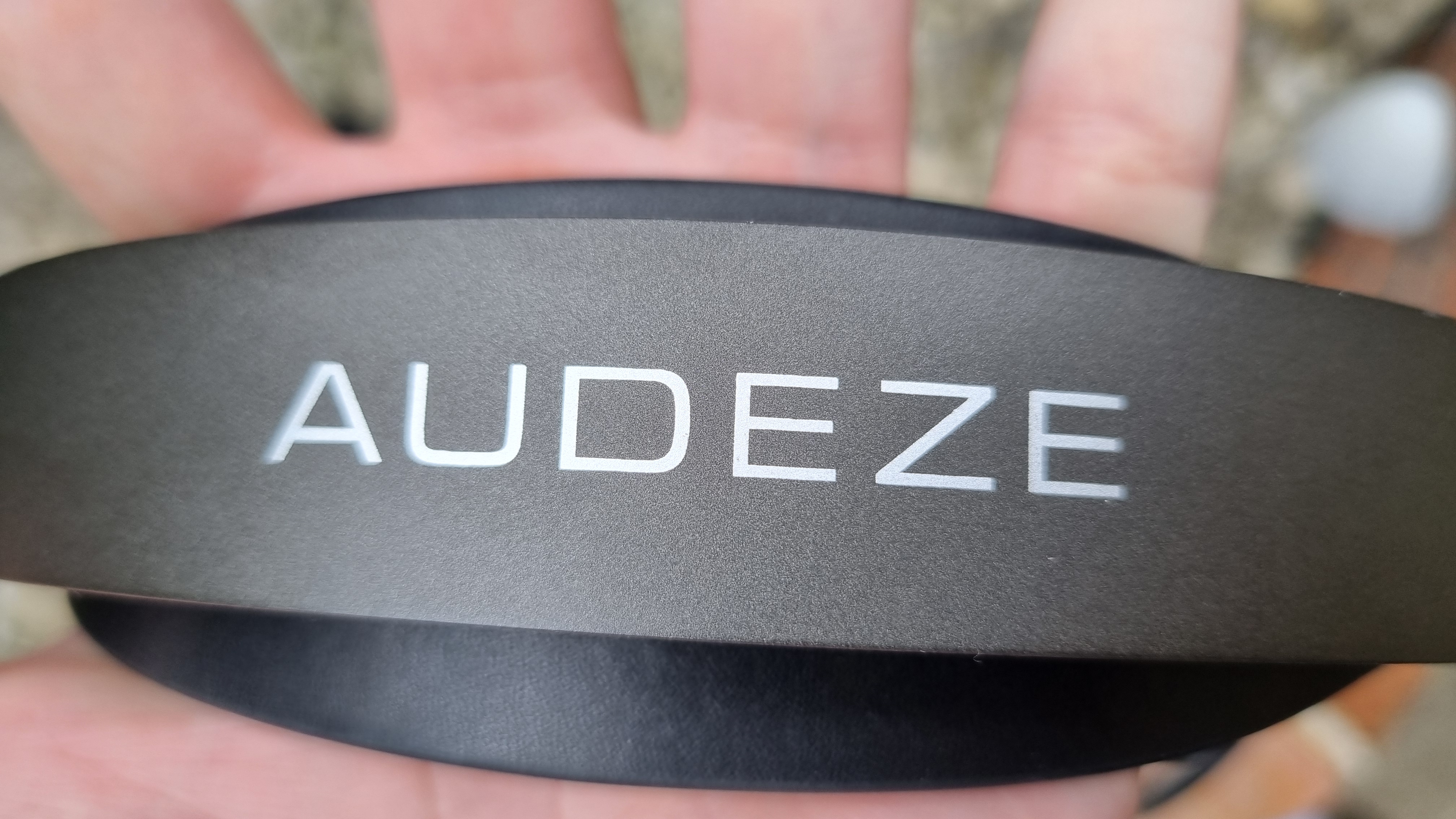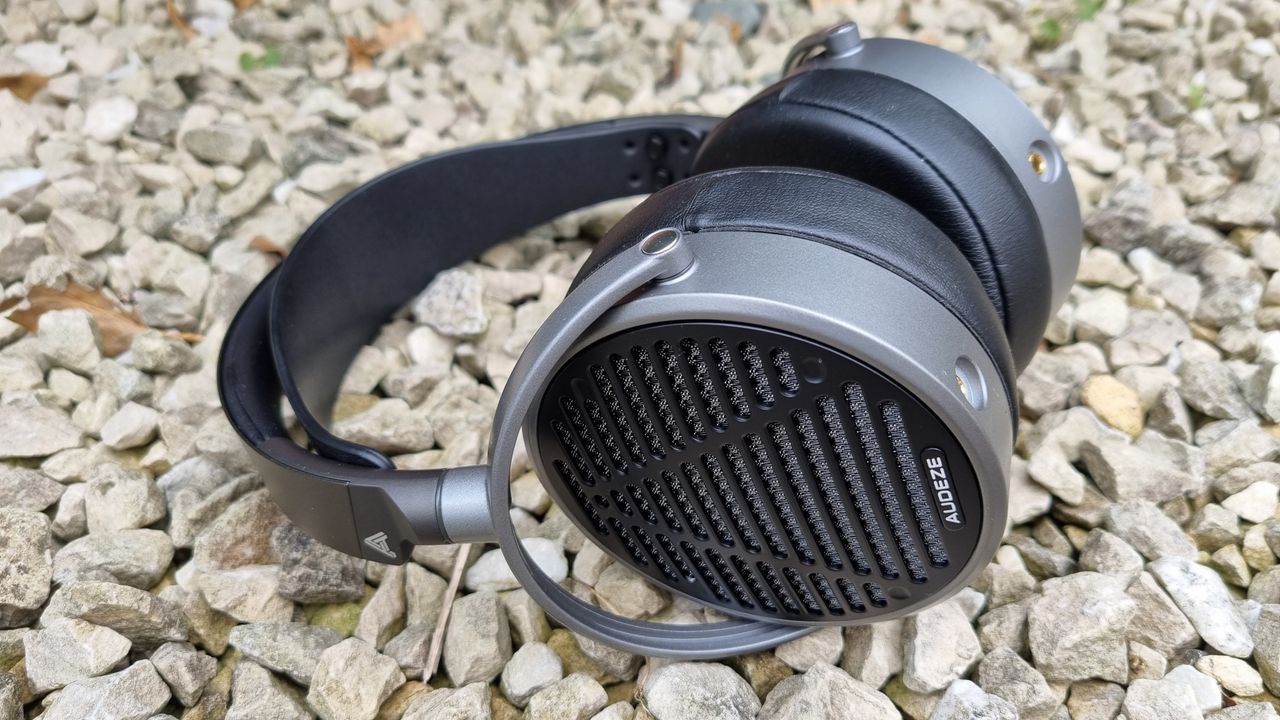
I'll be right up front about this, so strap in: the Audeze MM-100 is not for everyone. Nor, it must be said, is it designed to be. Audeze describes the planar magnetic drivers used here as "tuned for production-grade accuracy", and it really isn't kidding. But if pin-point audio precision is your goal, the Audeze set is one of the finest I've heard—and if you don't mind messing around with a software EQ, you can make it sound great for daily listening, too.
A pair of these magnesium and steel-chassised beauties will set you back $399/£399 a pop, and that's a huge amount of cash to spend on a set of cans. What you receive when you open the box, however, immediately feels like a quality piece of gear. It's rare I coo and crow over a chassis design, but there's something retro futuristic about the MM-100 that immediately demands comment.
Nestled inside the substantial earcups are a pair of planar magnetic noise-makers that Audeze says are some of its most accurate yet. They've been tuned in collaboration with Manny Marroquin, a Grammy award-winning producer and mixing engineer who's worked with some extremely big names, from Mariah Carey to Kanye West—so I'd say he was fairly well-qualified. Okay, very.
Before I break open my box of sonic superlatives, however, I should explain why planar magnetic drivers are so special. Unlike a traditional speaker, where a surface is resonated with the help of a magnet on the rear to create sound, planar magnetics use a flat, ultra-thin diaphragm suspended within a magnetic field to reproduce your audio. The fine precision capabilities of a planar magnetic driver dwarf those of a traditional unit, which means they're highly coveted by audiophiles for their exceptional accuracy.
And the ones I'm testing here have been tweaked even further towards the neutral. What that means in practice is, pulling the MM-100 out of the box and listening to it for the first time—immediately after listening to a traditional gaming headset—comes as something of a shock.
These drivers are flat, with a capital F. That doesn't mean they sound bad, per se. But the effect is something akin to getting out of a hot tub and jumping into a freezing cold swimming pool. Treble and mids sit precisely in the mix in a way that can initially feel thin, while the bass sits back in the sonic broth, hinting at the low end underneath rather than bouncing your eardrums around.
This is far from my first set of reference-style headphones, but even I found the experience a little jarring, so I decided to do a bit of tweaking to see what those drivers were really capable of.
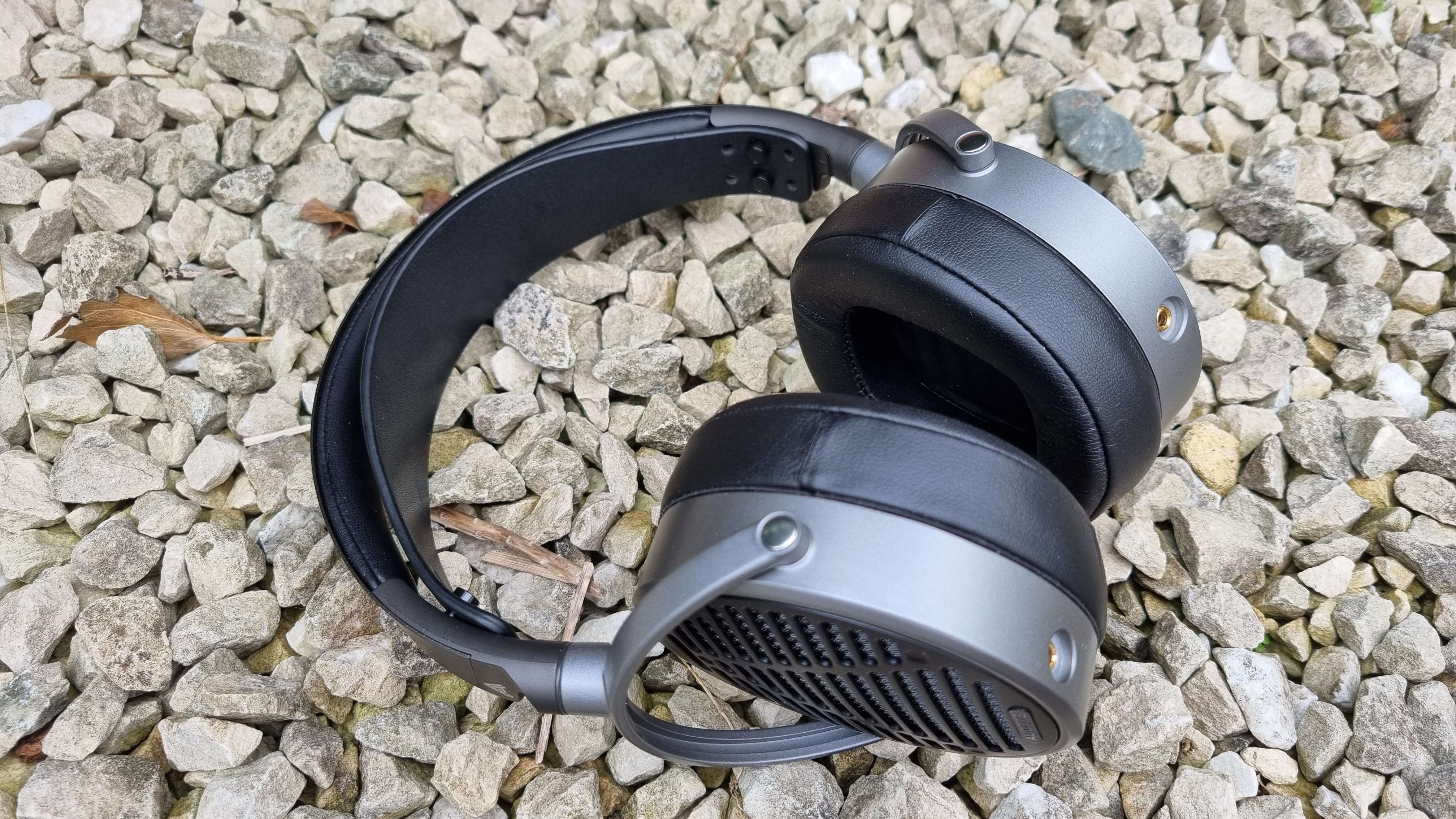
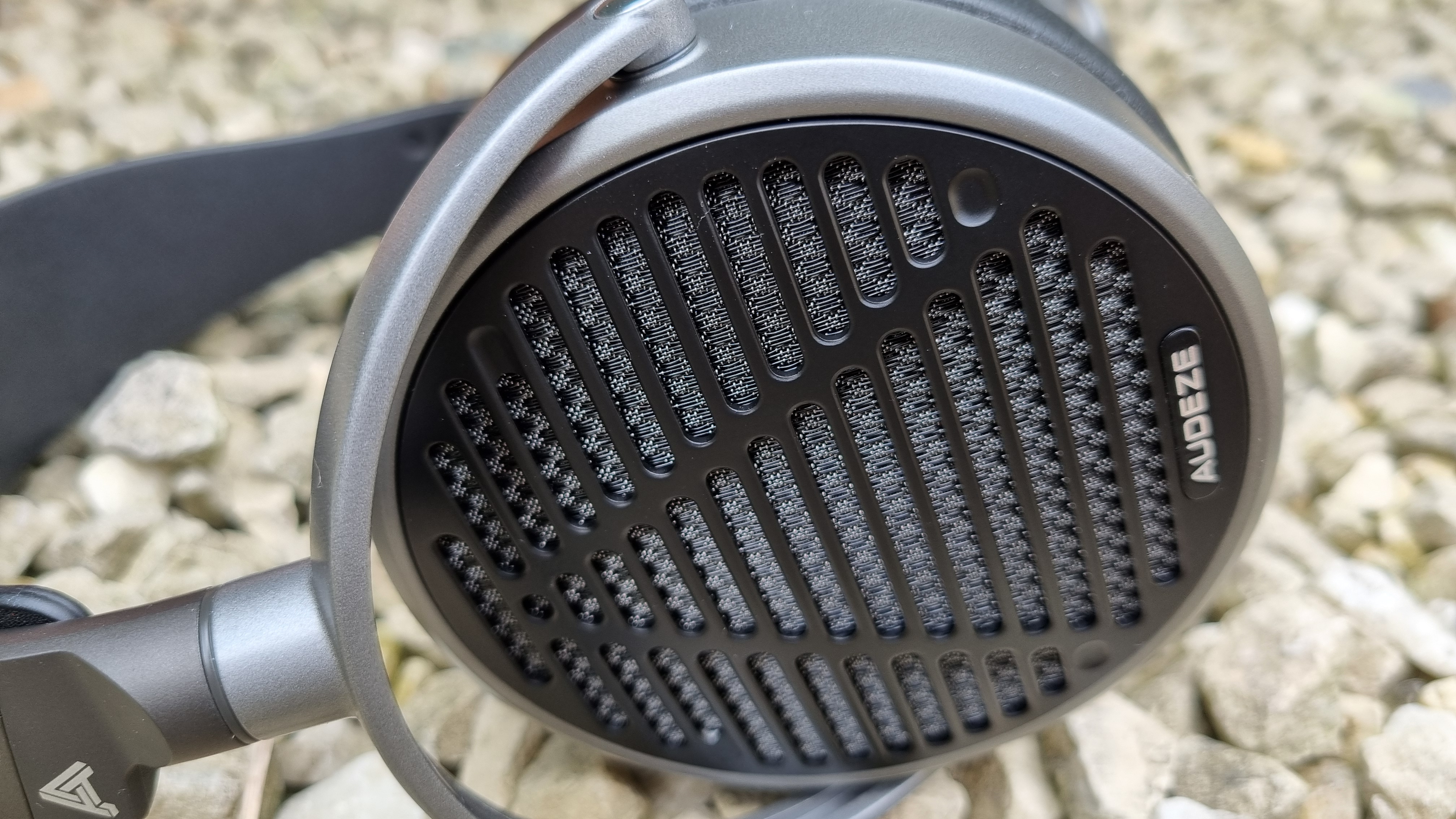
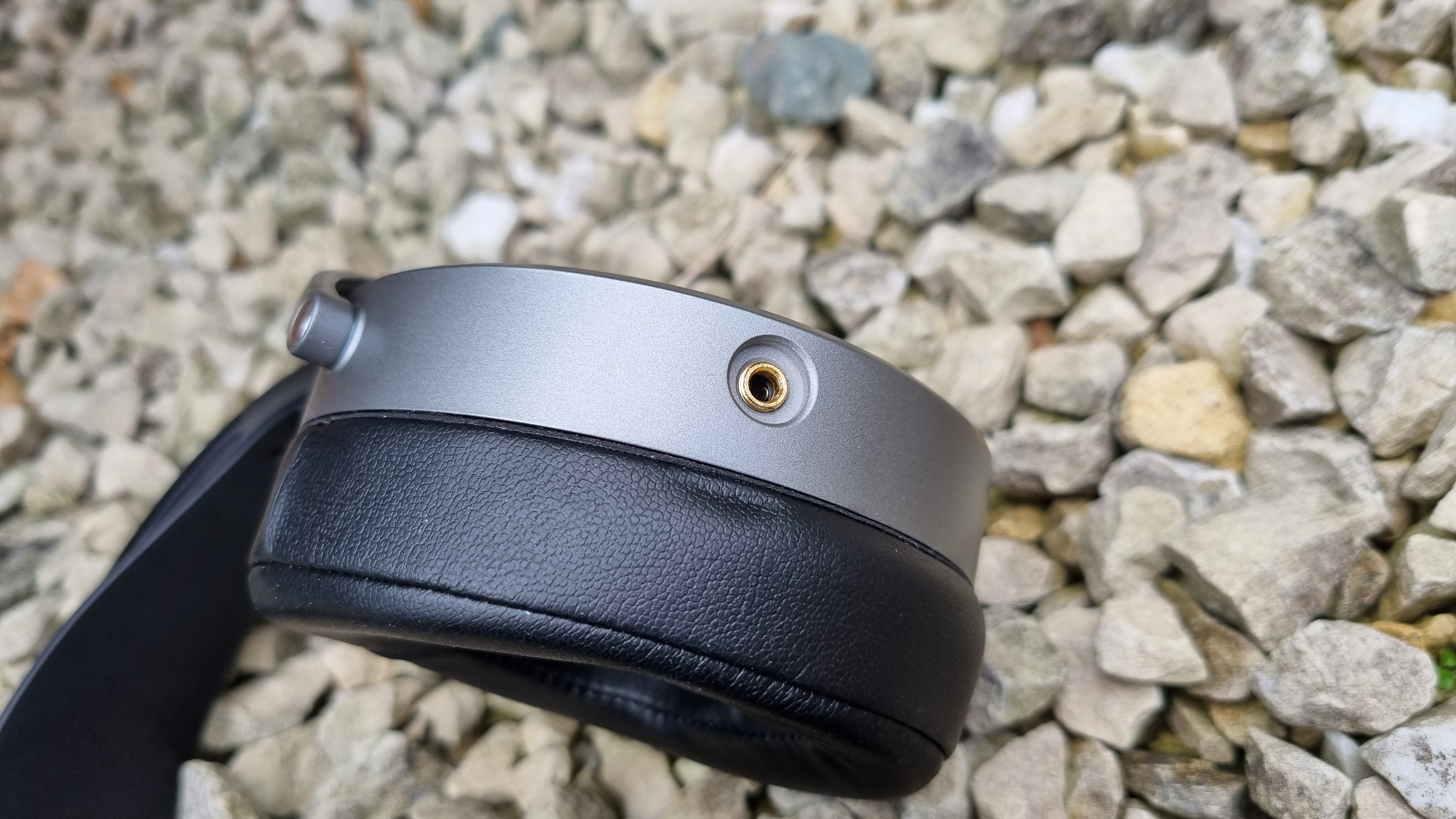

Planar magnetics of old used to require a bit of breaking in to get the most out of them, so I duly set the MM-100 up on my laptop, tucked it under a duvet, and blasted some of the heaviest music I could think of through its poor little magnetic beasties for a few hours to see if it would loosen things up.
The duvet was a necessary caveat, as this is an open-backed set, which means the outer ear cups are grilled to expose the rear of the drivers to the open air. Opening up the rear of the drivers often widens the soundscape considerably, but it also means that anyone in the near vicinity can hear what you're listening to, which makes them somewhat unsociable. Certainly, my relationship would be in danger if I pushed the Audeze to its limits in my front room.
...think of it as a wide sonic colour palette, ready to be painted on if you're prepared to put a small amount of work in.
After a breaking-in period, the MM-100's drivers have indeed loosened. What was initially a somewhat harsh tune has since become shiny and smooth, and the bass response is much improved.
Still, don't expect it to sound as bouncy and punchy as a regular gaming headset. It's simply not its job, instead sacrificing the skull-pushing bass for a shiny, ultra-smooth sound profile. The bass is most certainly there, it's just sitting where it was designed to sit, not boosted to high-heaven like it would be in most consumer headphones.
That's not to say you can't make the MM-100's drivers sound great for daily usage, though. If you're considering a set of these then you're likely familiar with a basic EQ, and after adding a boosted, Harman-style curve in my basic Realtek audio software, the MM-100 duly comes to life.
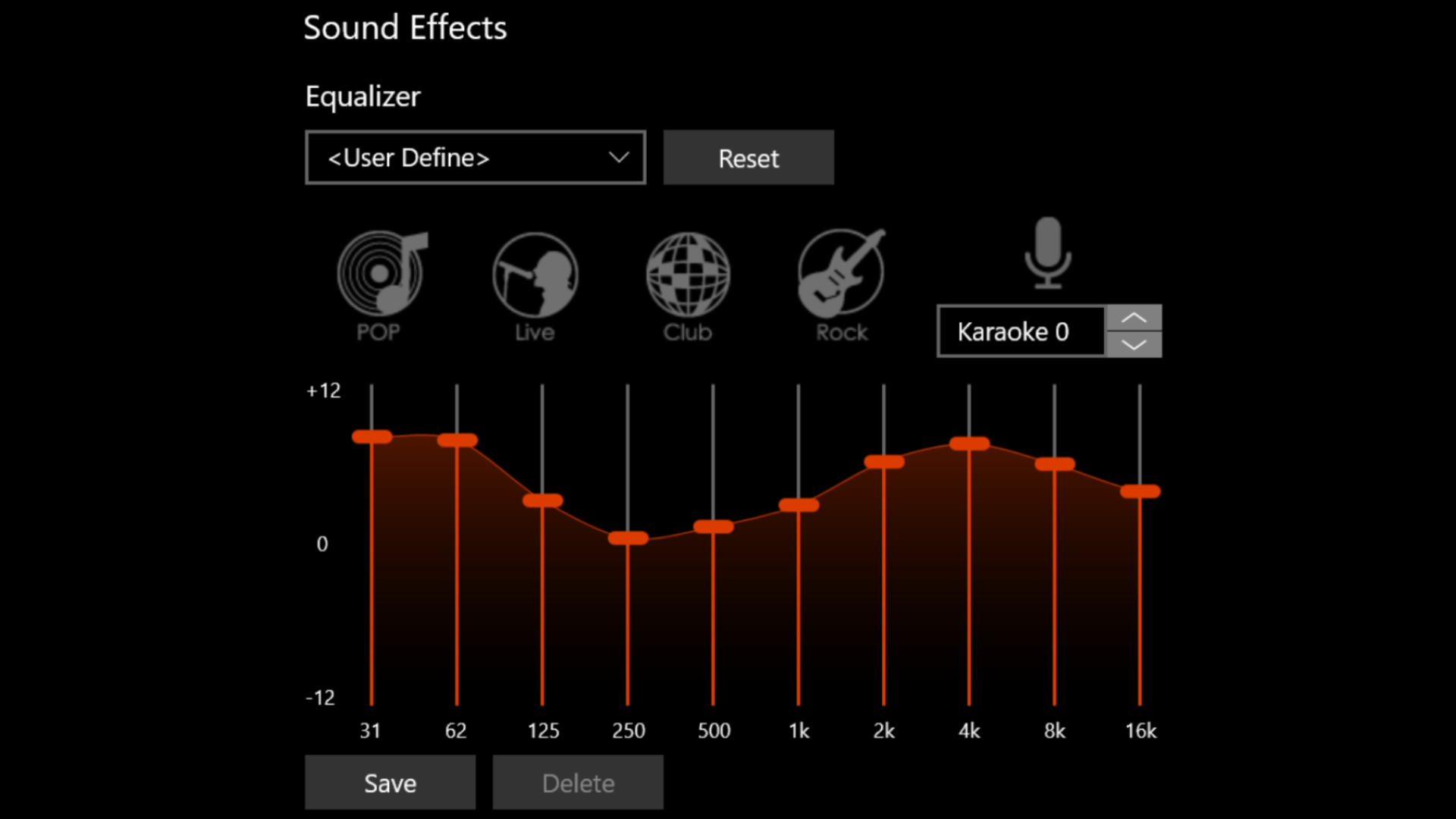
Above is an example of the sort of curve you'll want to set to get a lovely, more traditional sound out of these phones, and it really allows the quality of those drivers to shine. The separation, soundscape, and mix reproduction the MM-100's planar magnetics are capable of is nothing short of excellent, and the smoothness of the frequency response is spine-tingling to listen to with certain tracks.
You will need to do a bit of tweaking to achieve it, though, and I think an argument could be made that you shouldn't have to for this sort of price.
Still, the MM-100 is set up from the box for production duties, so I don't think it's too much of a surprise that the drivers prioritise accuracy, not artificially-elevated loveliness, by default. I think it's best to think of it as a wide sonic colour palette, ready to be painted on if you're prepared to put a small amount of work into your brush strokes. And if you have a good headphone amp? All the better. The Audeze set likes a push, whether that's through an EQ, or an extra boost in the signal chain.
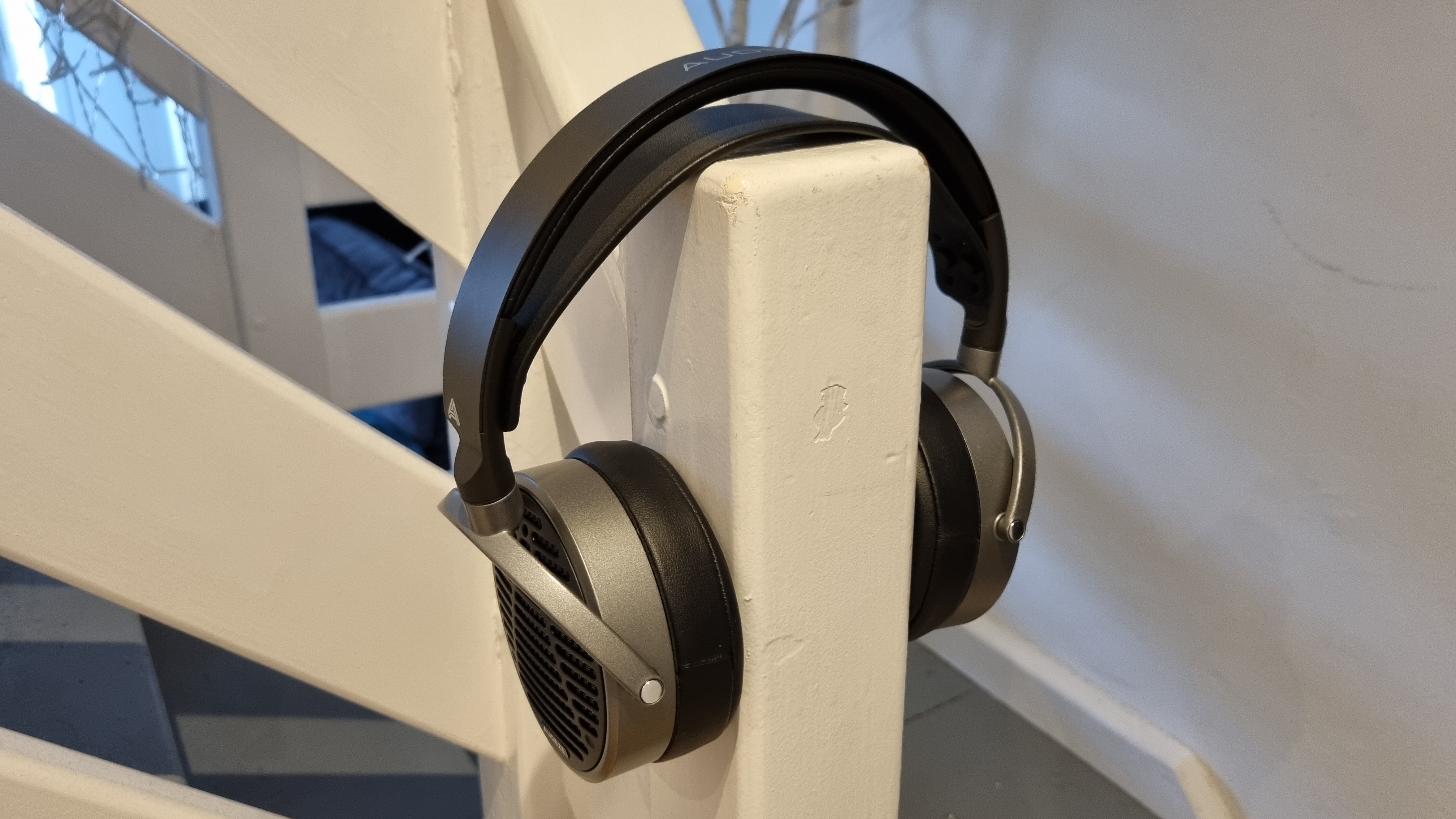
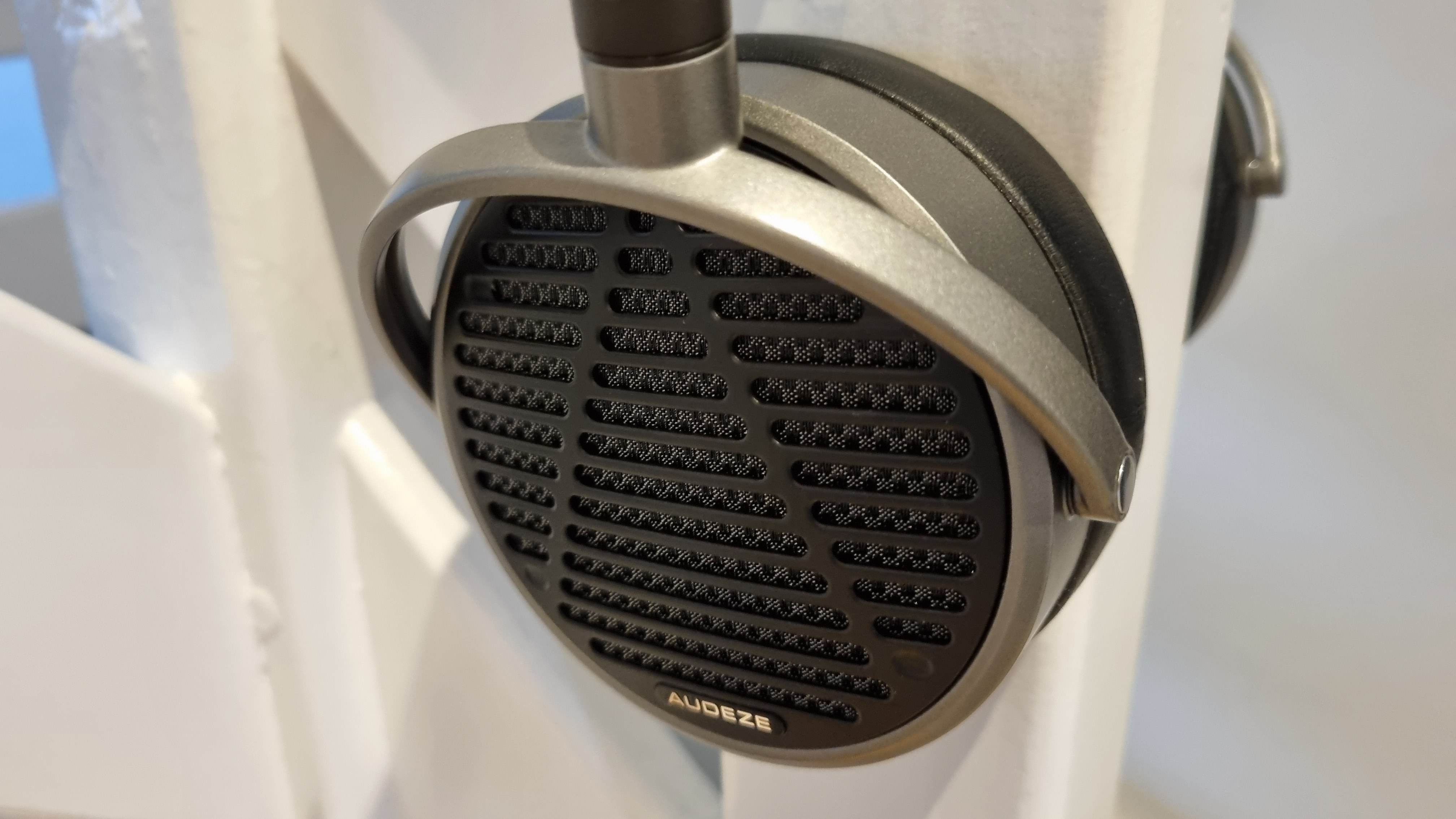
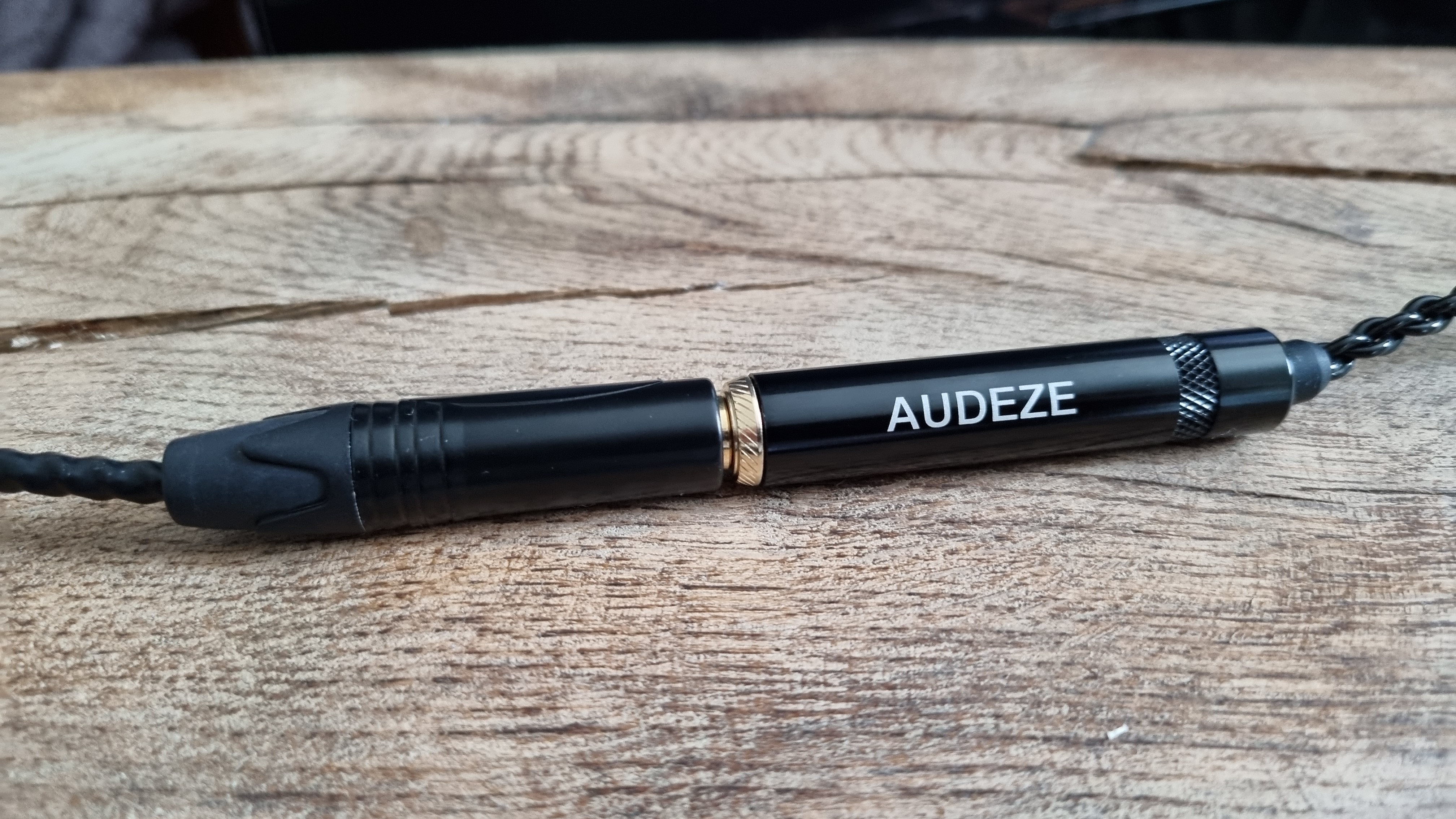
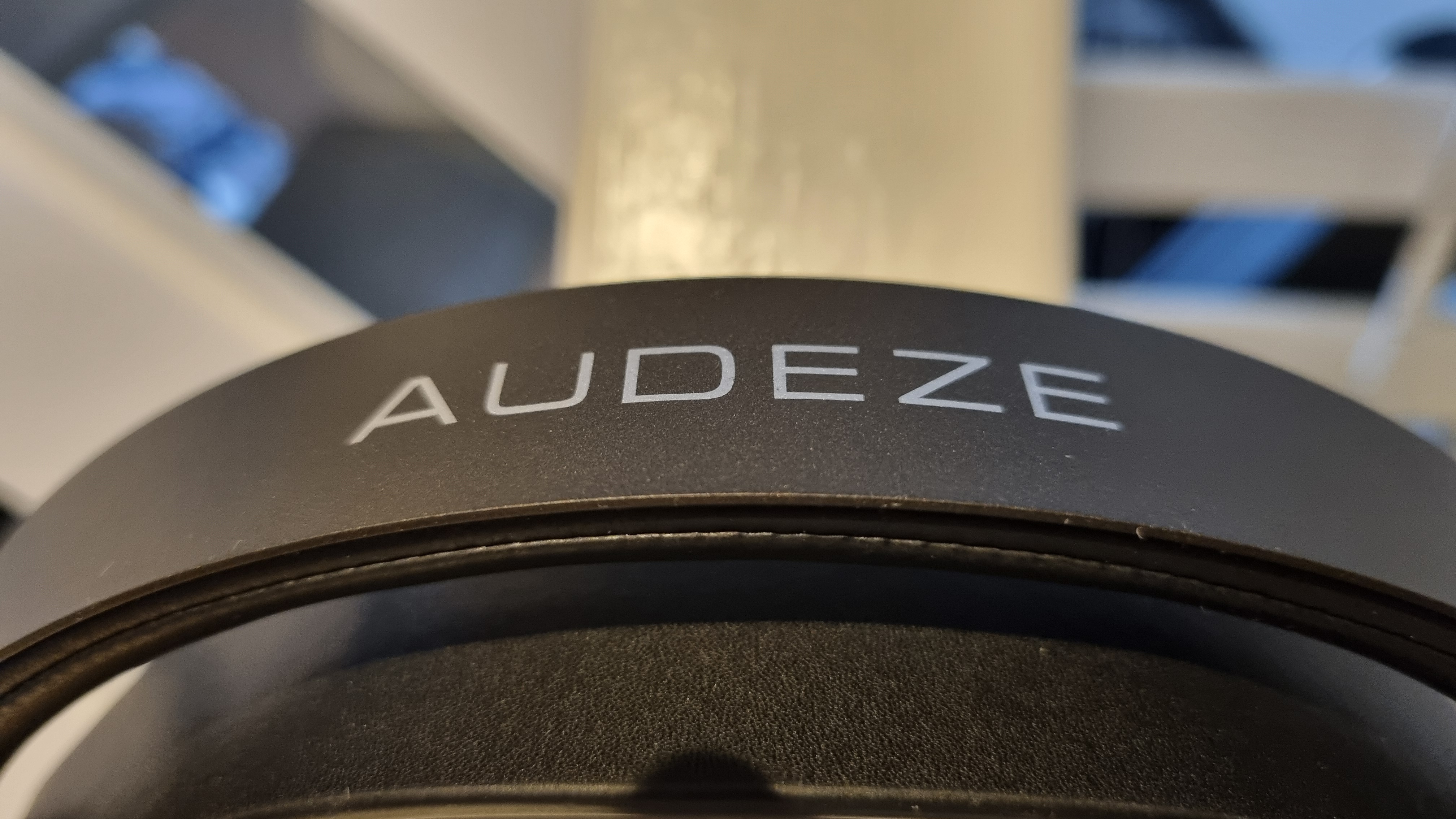
But what about gaming? Well, the major caveat here is that you don't get a microphone, like many audiophile-grade headphones. However, if you're the sort of person who finds themselves more immersed in a game if the soundstage is wider, my goodness you're in for a treat.
Also, we can be friends. Anyway, much has been written about the loveliness of a good set of open backs combined with a good audio engine, and much of that writing has been from me. That ultra-wide sonic capability means that delicate, almost fragile details are allowed to shine through the mix, which in turn means that a buzzing insect in an open field really can make you swat at your head out of sheer reflex.
Yes, dear reader, it happened to me. Anyway, the Audeze MM-100 makes for an excellent gaming companion, although I would like it to be a little lighter. That 475g weight makes the chassis feel gorgeously premium in the hands, but after wearing it for a 4-hour+ session, my neck sure feels the strain. The faux-leather headband in combination with the cooling-gel-filled earpads, however, still makes for a comfortable wearing experience overall.
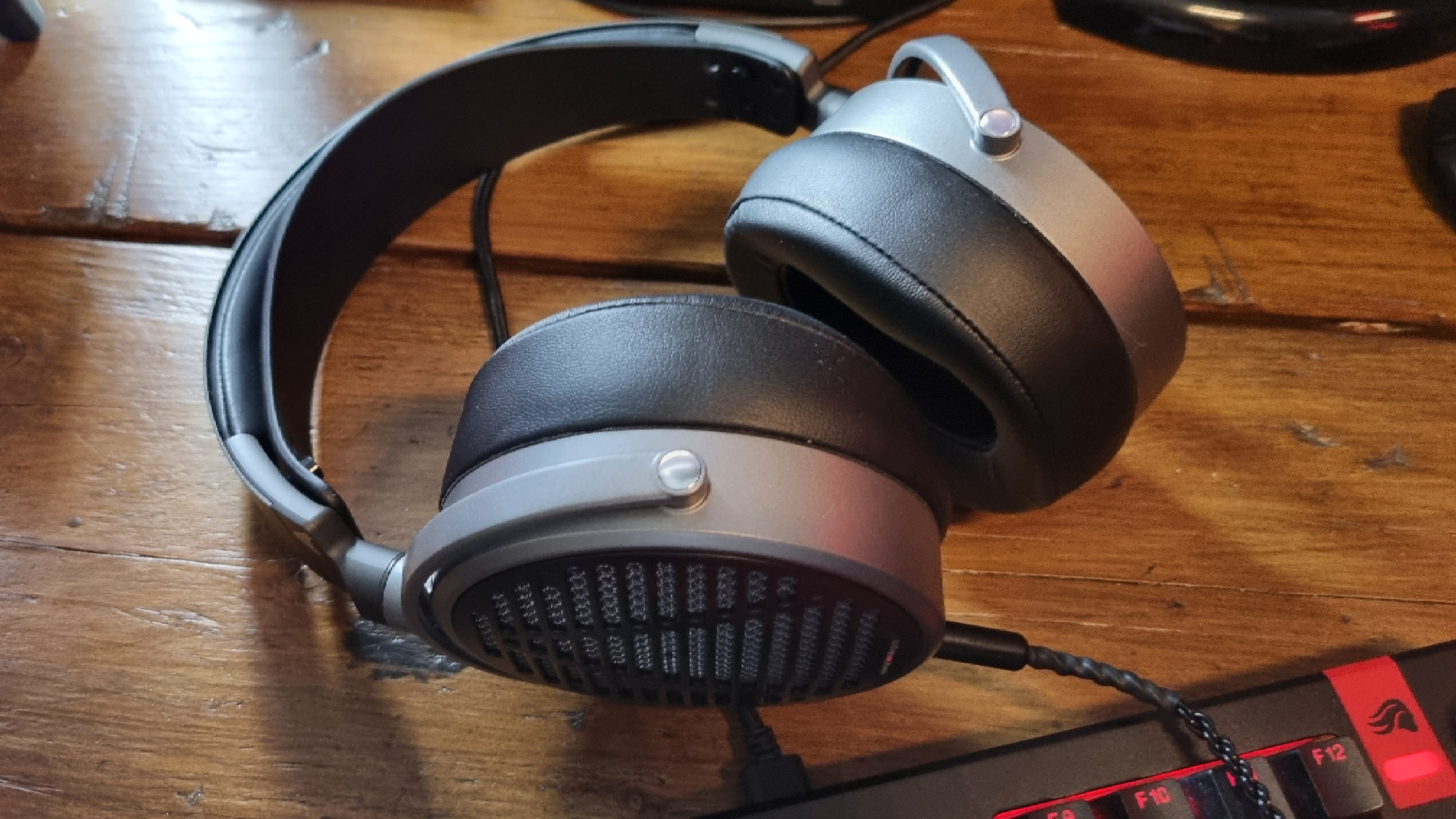
So, the real question is, should you be considering the Audeze MM-100 for your next headphone purchase? And the answer, I'm afraid, is complicated.
✅ You make your ears work for a living: If audio or video production is your game, I reckon you'll love the responsiveness and tendency towards neutrality here.
✅ You don't mind fiddling with an EQ: Studio-style headphones can sometimes react poorly to a bit of home tuning, but the MM-100 is happy to fatten up with a slight tweak.
❌ You want plug and play audio nirvana: If you simply want a pair of high-end headphones that sound gorgeous from the get-go, this set might be a bit too fussy for your tastes.
❌ You're not fanatical about audio quality: There's absolutely nothing wrong with opting for something more consumer-friendly, and saving yourself some cash in the process.
If you're looking for superb drivers, a microphone, and something more traditionally tuned, the Beyerdynamic MMX 300 Pro is still the better choice overall. While the Stellar .45 drivers aren't quite up to the standards of planar magnetics, they also offer a beautiful, wide soundscape, and don't need quite so much tweaking to get the most out of them.
And, should planar magnetics truly be your heart's desire, you should definitely take a look at the Audeze Maxwell. It's a proper gaming headset, with much fewer concessions made to absolute accuracy. Really, it's the best of both worlds—planar magnetic gorgeousness, combined with gaming headset features in perfect harmony. It's earned itself the top wireless spot in our best audiophile headphones for gaming guide, and believe me, it got there for a reason.
However, the MM-100 serves a different purpose, and for that reason should be judged a little differently. For video editors, audio engineers, and those of you that are really, really serious about the accuracy of your sound, I'd say it's well worth considering.
It's magnificently well-made, precise to a fault, and feels like serious audio gear for serious people. Me, I prefer the Maxwell. But should I be called back into the studio once more for a session or two, it's the MM-100 I'll be taking with me instead.
